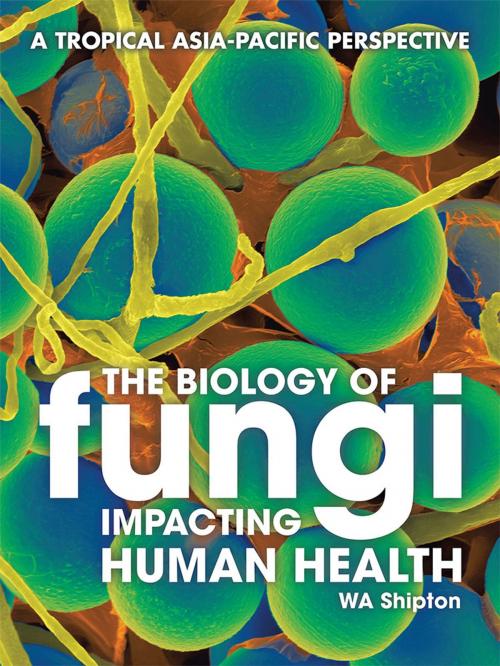The Biology of Fungi Impacting Human Health
A Tropical Asia-Pacific Perspective
Nonfiction, Reference & Language, Reference, Science & Nature, Science| Author: | WA Shipton | ISBN: | 9781482894790 |
| Publisher: | Partridge Publishing Singapore | Publication: | December 10, 2012 |
| Imprint: | Partridge Publishing Singapore | Language: | English |
| Author: | WA Shipton |
| ISBN: | 9781482894790 |
| Publisher: | Partridge Publishing Singapore |
| Publication: | December 10, 2012 |
| Imprint: | Partridge Publishing Singapore |
| Language: | English |
Fungi have become increasingly significant determinants of human health and may cause as heavy a burden to health as viruses, bacteria and parasites. This outcome has occurred on account of the rise in diseases affecting the immune system and in the risk factors associated with advances in technologies used to treat various diseases and human conditions. These trends are no more evident than in tropical locations. This text emphasizes the biology of fungi impacting human health, with an emphasis on the Asia-Pacific region. The author draws on his own experience working in tropical Australia, Papua New Guinea and Thailand. A range of information is presented on the natural relationships of fungi, which helps the reader to understand the interactions these microbes engage in with other living organisms including plants and microfauna. Highlighted are the abilities of fungi to survive in soil, on plants and animals and their capacity to adapt to changing conditions and evade attempts to control them. The successes and problems encountered in controlling fungi biologically are outlined, including the development of vaccines. Practical methods to limit the impact of mycotoxins produced by fungi are suggested, including moderating plant growth conditions and being aware of human nutritional status.
Fungi have become increasingly significant determinants of human health and may cause as heavy a burden to health as viruses, bacteria and parasites. This outcome has occurred on account of the rise in diseases affecting the immune system and in the risk factors associated with advances in technologies used to treat various diseases and human conditions. These trends are no more evident than in tropical locations. This text emphasizes the biology of fungi impacting human health, with an emphasis on the Asia-Pacific region. The author draws on his own experience working in tropical Australia, Papua New Guinea and Thailand. A range of information is presented on the natural relationships of fungi, which helps the reader to understand the interactions these microbes engage in with other living organisms including plants and microfauna. Highlighted are the abilities of fungi to survive in soil, on plants and animals and their capacity to adapt to changing conditions and evade attempts to control them. The successes and problems encountered in controlling fungi biologically are outlined, including the development of vaccines. Practical methods to limit the impact of mycotoxins produced by fungi are suggested, including moderating plant growth conditions and being aware of human nutritional status.















